Madagascar is a world unto itself, home to unique ecosystems and species that exist nowhere else. Its national parks span lush rainforests, rugged mountains, dry forests, and dramatic rock formations, offering visitors the chance to experience a range of environments and wildlife that feel otherworldly. Apart from its beautiful beaches, we visited a few of Madagascar’s top national parks during our three-month stay. Now, we can’t wait to go back and explore even more. Below, we highlight ten of Madagascar’s best national parks to inspire your adventure.
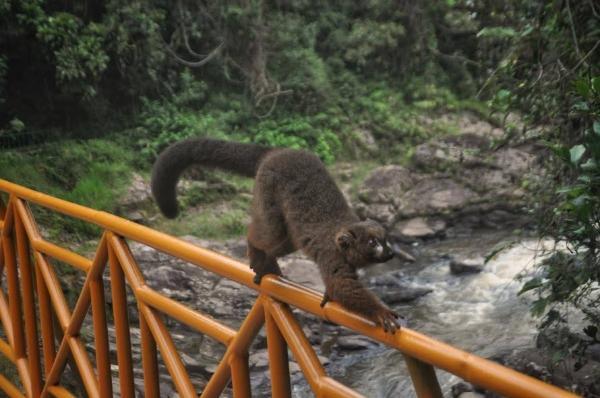
Affiliation disclosure: By purchasing goods or services via the links contained in this post, I may be earning a small commission from the seller's profit, without you being charged any extra penny. You will be thus greatly helping me to maintain and keep enriching this website. Thanks!
Some general information: Ticket prices for all parks range between $10 and $15. In most parks, hiring a local tour guide is mandatory, with fees that vary based on trip length and group size. Many national parks are quite remote and require a 4×4 vehicle to access, and some are completely inaccessible during the wet season. Be sure to research thoroughly and plan ahead. If you’re limited on time, the best way to explore a significant part of this vast and challenging country is by booking a private road trip like these:
If you’re traveling independently, you can use this map to look for accommodation:
Stay22 is a handy tool that lets you search for and compare stays and experiences across multiple platforms on the same neat, interactive map. Hover over the listings to see the details. Click on the top-right settings icon to adjust your preferences; switch between hotels, experiences, or restaurants; and activate clever map overlays displaying information like transit lines or concentrations of sights. Click on the Show List button for the listings to appear in a list format. Booking via this map, I will be earning a small cut of the platform's profit without you being charged any extra penny. You will be thus greatly helping me to maintain and keep enriching this website. Thanks!
Isalo National Park
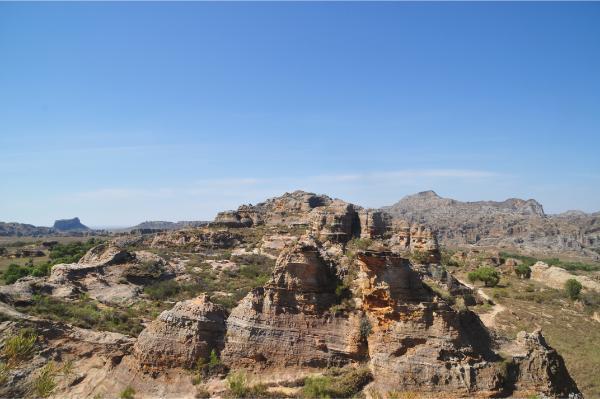
Overview: Isalo National Park is an expansive area in southwestern Madagascar, known for its striking sandstone formations, deep canyons, and scenic waterfalls. The park is often compared to the American Southwest, with its arid rock landscapes and unique, natural pools.
Highlights: Visitors to Isalo can enjoy the iconic “Piscine Naturelle,” a natural swimming pool shaded by palms and fed by a small waterfall. The canyons here, such as the Namaza Canyon, offer moderate hikes with shaded groves and even cooler streams—a welcome contrast to the open plateaus and ridges.
Wildlife: While the arid landscapes may seem inhospitable, Isalo is home to various lemur species, including the iconic ring-tailed lemur, red-fronted brown lemurs, and Verreaux’s sifakas. Bird enthusiasts may spot the Madagascar kestrel and Benson’s rock thrush, both endemic to this area. The flora here includes drought-resistant species such as the Pachypodium (Madagascar’s bottle tree), which adds to the surreal landscape with its thick, bulbous trunk and spiny branches.
Read More: Isalo National Park – Madagascar Road Trip #4
Ranomafana National Park
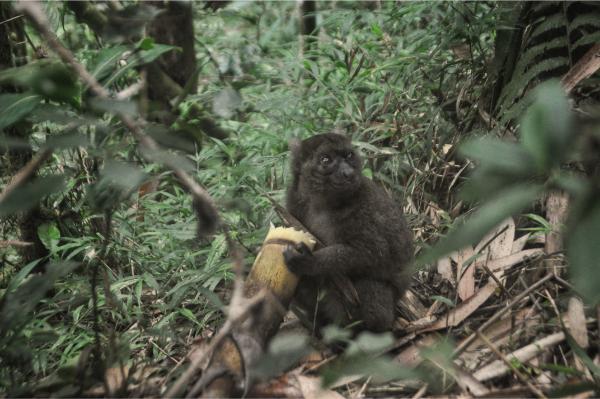
Overview: Located in southeastern Madagascar, Ranomafana National Park covers over 160 square miles of tropical rainforest, with a cooler, humid climate and lush landscapes. Established in 1991, this park was created to protect the habitats of critically endangered species like the golden bamboo lemur.
Highlights: The park is famous for its waterfalls, including the stunning Namorona Falls, and for its hot springs, which are popular with visitors. Ranomafana’s forested trails vary from gentle strolls to steep hikes, allowing for a range of experiences from casual wildlife spotting to more rigorous jungle exploration.
Wildlife: Ranomafana is best known for the elusive golden bamboo lemur, a rare primate that feeds exclusively on bamboo. Other lemurs such as the Milne-Edwards’ sifaka, greater bamboo lemur, and red-bellied lemur also live in the park. Birdwatchers will enjoy spotting species such as the pitta-like ground roller and the velvet asity. The forest floor and streams are home to numerous frog species, including the brightly colored Mantella frogs.
Read More: Ranomafana National Park – Madagascar Road Trip #3
Andasibe-Mantadia National Park
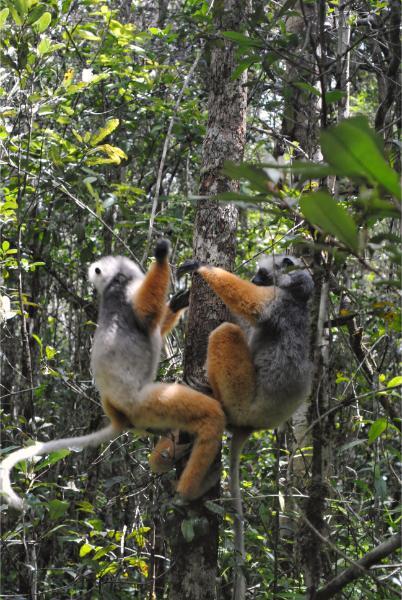
Overview: Easily accessible from the capital Antananarivo, Andasibe-Mantadia is one of Madagascar’s most visited parks, covering about 155 square miles of dense rainforest. The park is known for the indri, the largest species of lemur, whose calls echo throughout the forest in haunting melodies.
Highlights: Andasibe-Mantadia is divided into two main sections. Andasibe (Perinet) has well-maintained trails and is particularly popular for guided night walks, where you can spot nocturnal creatures. Mantadia, on the other hand, is more rugged, providing challenging hikes and a chance to explore deeper into the rainforest.
Wildlife: Andasibe-Mantadia is known for its population of indri lemurs, which can often be seen and heard in the park. Other notable species include the diademed sifaka, common brown lemurs, and a wide variety of reptiles, including the colorful panther chameleon. Frogs are abundant here, with species such as the bright green and black Madagascan poison frog.
Read More: Andasibe & Analamazaotra National Park, Madgascar Hike
Tsingy de Bemaraha National Park
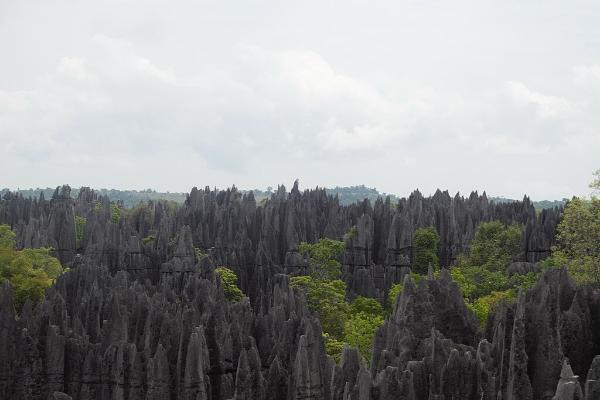
Overview: Tsingy de Bemaraha is a UNESCO World Heritage Site known for its remarkable “tsingy” formations—jagged limestone pinnacles that create a natural labyrinth. Located in western Madagascar, the park spans over 250 square miles and is as challenging to explore as it is rewarding.
Highlights: Exploring Tsingy de Bemaraha requires physical effort and a sense of adventure. Highlights include the suspension bridges and narrow canyons that offer unique perspectives of the limestone formations. Visitors can also enjoy the expansive views from “Belvedere,” a popular viewpoint that showcases the vast tsingy formations stretching into the horizon.
Wildlife: In this rocky terrain, you’ll encounter species specially adapted to the unique environment, such as Decken’s sifaka and the western lesser bamboo lemur. Several bat species thrive in the park’s many caves, while a variety of endemic plant species, such as drought-resistant Euphorbia, can also be seen here.
Masoala National Park
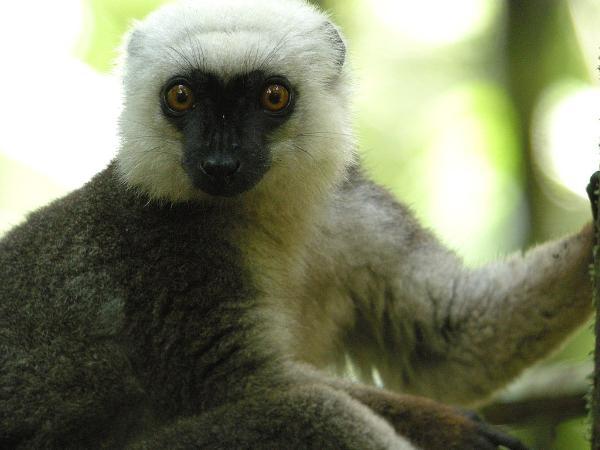
Overview: Madagascar’s largest national park, Masoala covers both dense rainforest and protected marine reserves along the northeastern coast. This remote park spans nearly 900 square miles, offering a pristine and less-visited rainforest experience with coastal access.
Highlights: Masoala’s dense jungles and coastal reefs make it ideal for both trekking and water activities. The park’s marine reserves allow for snorkeling and kayaking, where coral reefs and clear waters provide a vibrant underwater experience. The park’s coastal trails provide scenic views of the ocean against a rainforest backdrop.
Wildlife: Masoala is home to the endangered red-ruffed lemur and the elusive nocturnal aye-aye, Madagascar’s most peculiar-looking lemur. Visitors can also encounter Madagascar’s vibrant birdlife, including the helmet vanga and Madagascar serpent eagle. Marine life is diverse as well, with humpback whales migrating along the coast from June to September.
Andringitra National Park
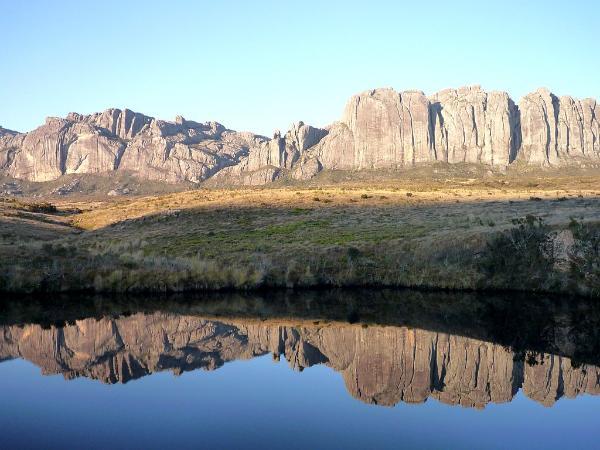
Overview: Andringitra National Park is a mountainous park in southeastern Madagascar, known for its granite peaks and high-altitude landscapes. The park is a favorite among adventure seekers, offering some of Madagascar’s best hiking and rock climbing.
Highlights: The main attraction is Pic Boby, the country’s second-highest peak, which provides challenging climbs and sweeping views. The Tsaranoro Valley, with its cliffs and forests, offers excellent trekking and rock-climbing opportunities. High-altitude flora such as endemic orchids thrive here, particularly in the cooler, upper reaches of the park.
Wildlife: The park’s unique ecosystems host several lemur species, including ring-tailed lemurs and the sifaka. Bird species such as the Madagascar blue pigeon and a variety of sunbirds can be seen. Reptiles include the stunning blue-eyed Madagascar day gecko, which is native to the area.
Zombitse-Vohibasia National Park
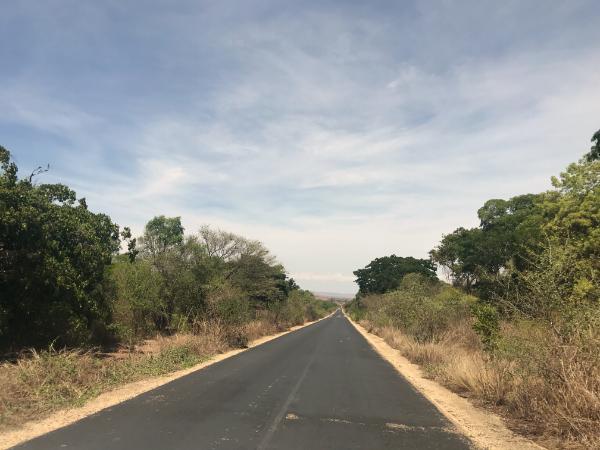
Overview: Located in southwestern Madagascar, Zombitse-Vohibasia is a dry deciduous forest park, known for its unique ecology and rare bird species. This smaller, often overlooked park offers a more intimate wildlife experience.
Highlights: The park features easy-to-walk trails and towering baobabs, giving it a distinctive dry forest landscape. Its relatively flat terrain makes it accessible to all, and it’s an especially good destination for birdwatchers.
Wildlife: The park is a sanctuary for the endangered Appert’s greenbul, a bird species found nowhere else in the world. Lemur species such as the Verreaux’s sifaka and the red-fronted brown lemur can also be seen here. Reptiles like the Madagascar iguana and a variety of geckos thrive in this habitat.
Amber Mountain National Park
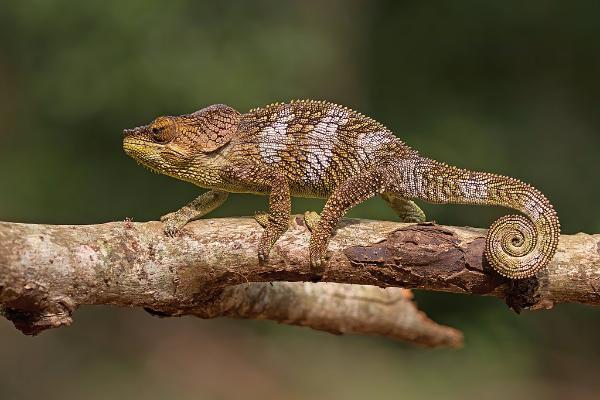
Overview: Amber Mountain National Park is located in northern Madagascar and is known for its cooler, humid environment due to its altitude. This mountainous park is characterized by waterfalls, crater lakes, and evergreen forests.
Highlights: The park’s waterfalls, such as the Cascade d’Antomboka, are popular hiking destinations, and the crater lakes provide beautiful vistas. The forested paths here make for cool and refreshing hikes, with mist often rolling through the trees, creating a mysterious ambiance.
Wildlife: Amber Mountain is home to the crowned lemur and the northern ring-tailed mongoose, both adapted to the cooler climate. Chameleons are abundant, including the tiny Brookesia minima, one of the smallest reptiles in the world.
Zahamena National Park
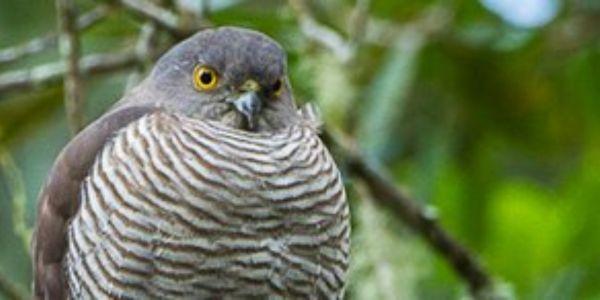
Overview: Zahamena, in eastern Madagascar, is a dense rainforest park with limited accessibility, making it one of Madagascar’s least-visited yet biologically rich parks. The park covers 158 square miles of primary rainforest, rivers, and waterfalls.
Highlights: Zahamena’s remote, pristine environment offers a truly wild experience. Its forested landscapes are perfect for adventurous explorers, though conditions can be challenging due to the dense vegetation and limited trail infrastructure.
Wildlife: With 13 species of lemurs, including the endangered black-and-white ruffed lemur, Zahamena is a prime lemur-watching destination. The park’s birdlife is equally impressive, with endemic species such as the Madagascar serpent eagle and red-breasted coua.
Ankarafantsika National Park
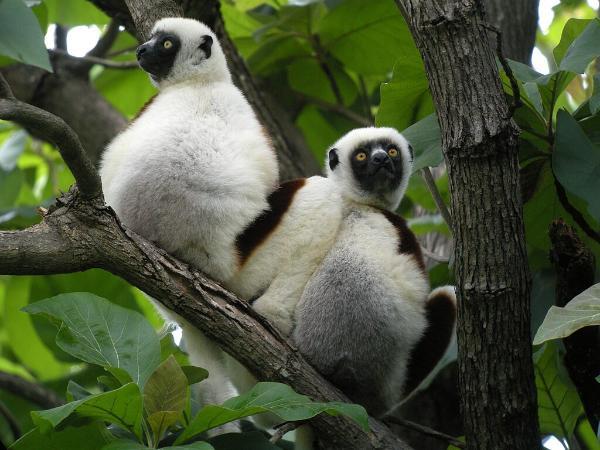
Overview: Located in northwestern Madagascar, Ankarafantsika National Park is known for its unique mix of dry deciduous forests, savanna landscapes, and diverse wetlands. It’s a fantastic destination for those interested in a combination of wildlife viewing and scenic hikes in a drier climate.
Highlights: Lake Ravelobe is a focal point for birdwatching and boat tours, where visitors can observe a wide range of waterfowl and other bird species. The park’s trails range from easy walks to more challenging hikes through dry forest terrain, making it accessible to all types of visitors. The park’s wetlands, lakes, and rock formations offer stunning photography opportunities and are home to numerous animal species.
Wildlife: Ankarafantsika is home to the critically endangered Coquerel’s sifaka, known for its striking white fur and tree-hopping agility. You can also encounter nocturnal lemurs, such as the fat-tailed dwarf lemur, on guided night tours. For bird enthusiasts, the park offers sightings of the Madagascar fish eagle and the Madagascar crested ibis, both endangered species. Reptiles, including the Malagasy giant chameleon and crocodiles that inhabit the park’s lakes, round out the park’s diverse wildlife offerings.
Final Tips
Each park has its own unique landscape and species, reflecting Madagascar’s immense ecological diversity. Entry fees support conservation efforts, while hiring a guide (often required or recommended) provides an in-depth look at the flora, fauna, and history of each region. Be sure to plan ahead, as some parks are remote with limited facilities, and Madagascar’s varied climate and geography mean that each park presents its own seasonal bests and challenges.
In Madagascar’s national parks, you’ll encounter an environment unlike any other, where nature has thrived in isolation to create a spectacle of biodiversity.
